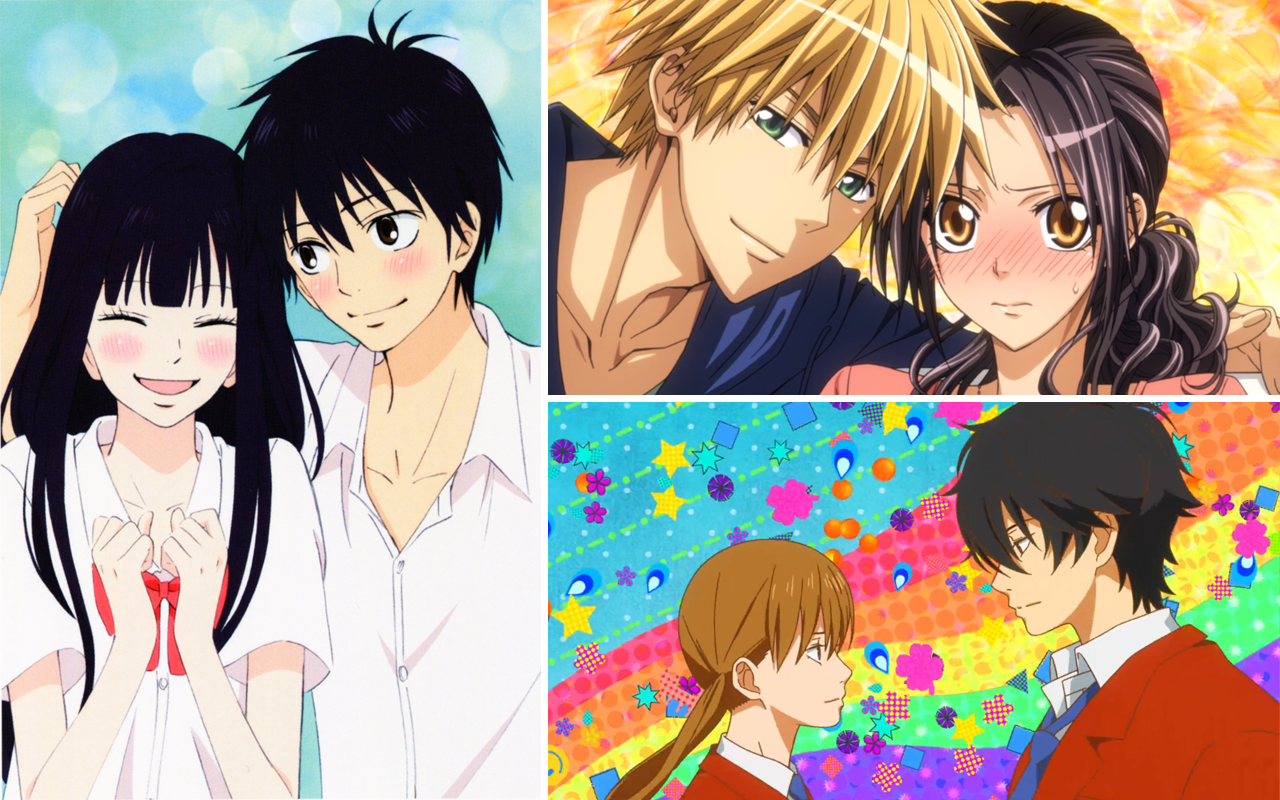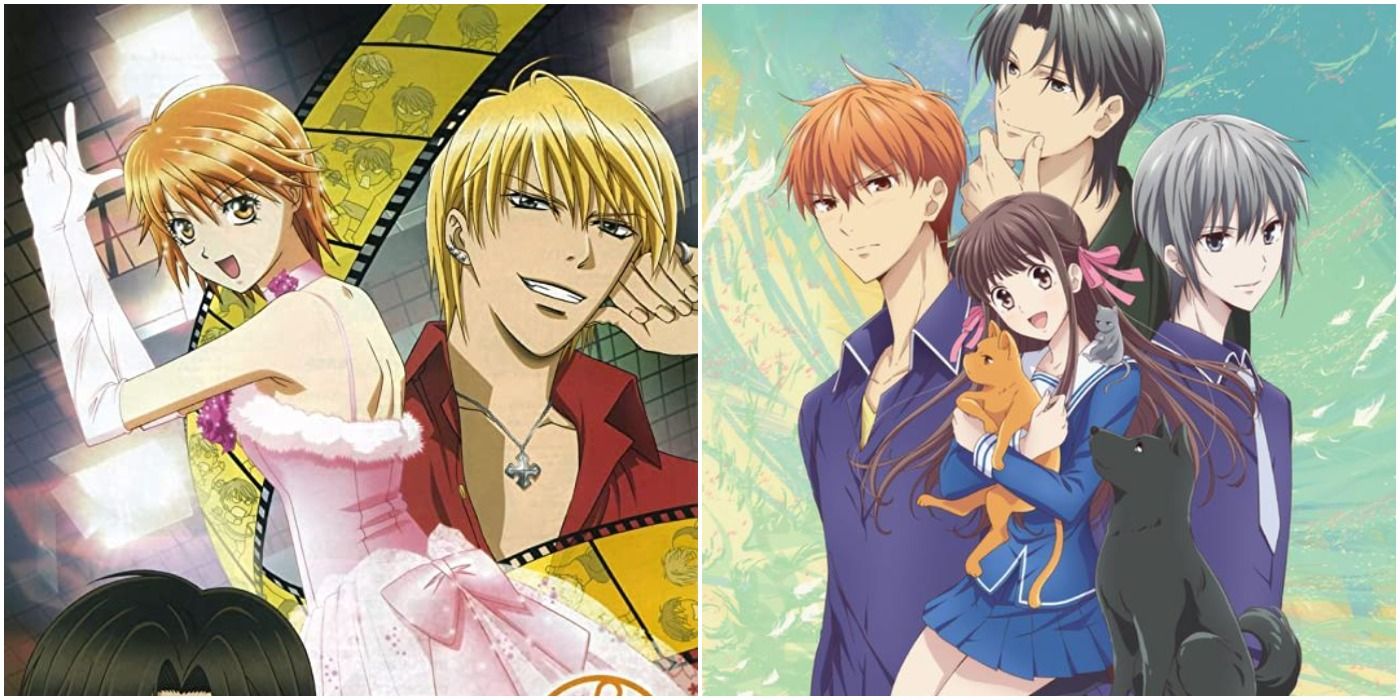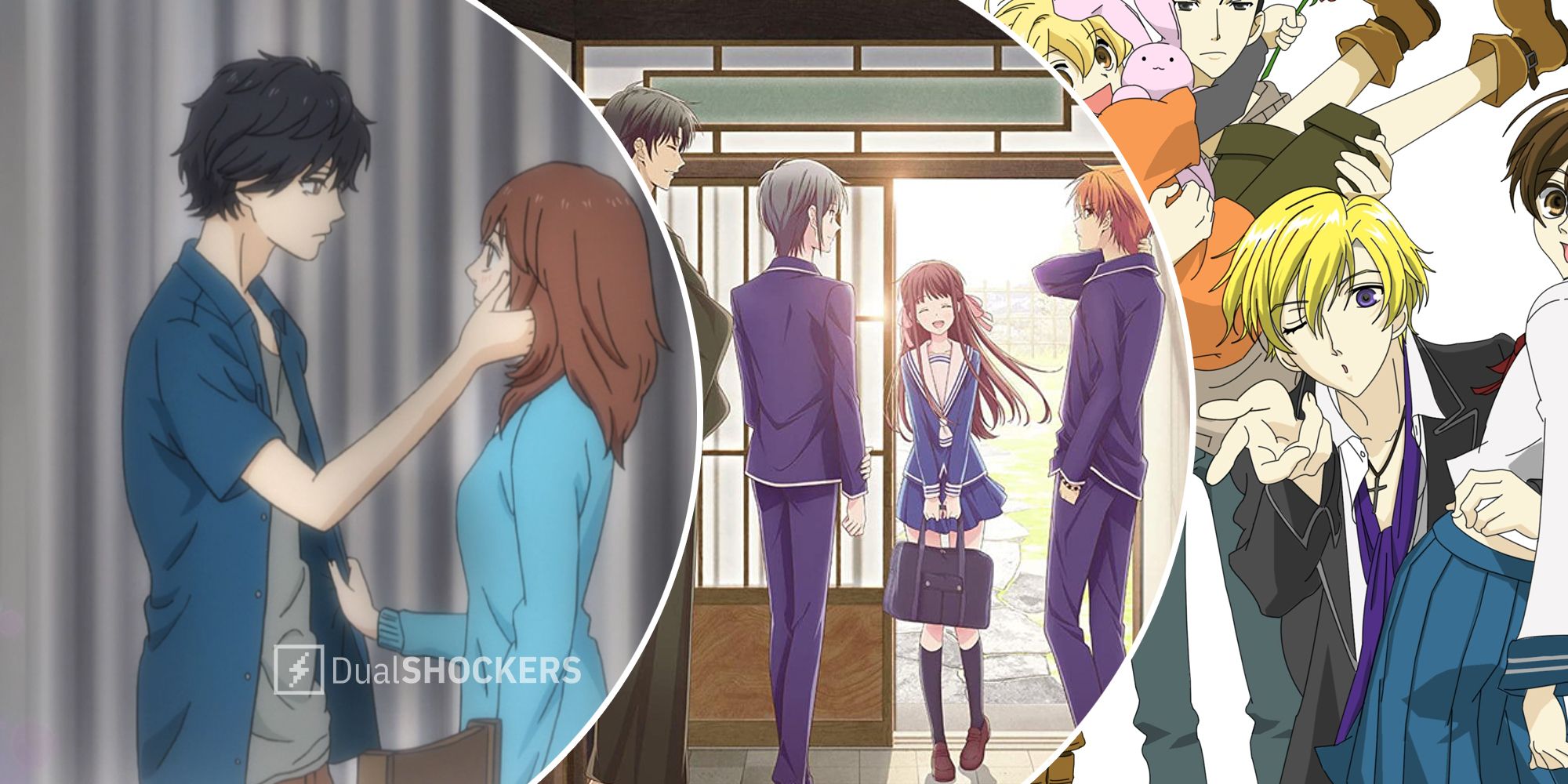The Enduring Shoujo Crave: Unpacking Its Irresistible Appeal
The "shoujo crave" is a phenomenon deeply rooted in the unique appeal of a genre often misunderstood yet profoundly impactful. Far from being a mere collection of romantic tales, shoujo is, at its core, an editorial category that indicates a target demographic, primarily young female readers. Thus, the media associated with it are ones from manga published in shoujo magazines, specifically tailored to resonate with this audience's experiences, dreams, and emotional landscapes. This demographic-driven approach means shoujo encompasses a vast spectrum of narratives, from heartwarming first loves to complex psychological dramas, all filtered through a lens designed to speak directly to its intended readership.
For decades, shoujo has captivated hearts worldwide, fostering a dedicated following that eagerly anticipates new releases and passionately discusses beloved classics. This enduring appeal stems from its ability to explore universal themes of growth, identity, relationships, and self-discovery with a depth and nuance often overlooked by casual observers. The "shoujo crave" isn't just about finding a good story; it's about finding a connection, a reflection, or an aspiration within pages that truly understand the intricacies of the human heart.
Table of Contents
- What Exactly Defines Shoujo? More Than Just Romance
- The Evolution of Shoujo: Breaking Stereotypes
- The Psychological Pull: Why We Shoujo Crave
- Beyond the Pages: Shoujo in the Digital Age
- Emerging Trends and Must-Reads in Shoujo/Josei
- The Enduring Legacy and Importance of Shoujo
What Exactly Defines Shoujo? More Than Just Romance
To truly understand the "shoujo crave," one must first grasp its fundamental definition. Unlike genres defined by plot or theme, shoujo is an editorial category that indicates a target demographic. This means that its classification isn't primarily about whether it features romance, fantasy, or drama, but rather about who the publisher intends to read it. The demographic that a manga is a part of is determined by what magazine it was published in. This seemingly simple fact is crucial because it dictates the editorial choices, artistic styles, and narrative approaches employed by creators.
For instance, a series like *Nana* was originally published in a magazine called *Shoujo Beat*, which is precisely why it’s considered shoujo, despite its mature themes, complex character relationships, and exploration of adult struggles. This demographic-first approach allows for immense narrative flexibility within the category. While romance is a prevalent theme, it is by no means the sole focus. Shoujo can delve into deep psychological narratives, intense friendships, personal growth, societal pressures, and even action or fantasy elements, all while retaining its core appeal to its target audience. The "shoujo crave" is thus for a storytelling style that prioritizes emotional resonance and character development, often through the lens of a young female protagonist's journey.
The Evolution of Shoujo: Breaking Stereotypes
The landscape of shoujo manga has undergone a significant transformation over the decades, continually evolving to reflect changing societal values and reader interests. Gone are the days when shoujo was strictly confined to innocent school romances or Cinderella stories. While these tropes still exist and hold a nostalgic charm, the genre has bravely expanded its horizons, incorporating a rich tapestry of themes and narratives that challenge traditional stereotypes.
Modern shoujo series frequently explore complex family dynamics, mental health issues, career aspirations, and even darker, more mature subjects. This diversification has allowed shoujo to shed its "fluffy" image, proving its capacity for profound storytelling. The importance of shoujo manga lies not just in its entertainment value, but in its ability to provide a safe space for young readers to explore challenging emotions and scenarios, offering both escapism and a mirror to their own developing lives. This commitment to growth and relevance fuels the persistent "shoujo crave" among a diverse readership seeking more than just simple narratives.
Blurring Lines: Shoujo, Josei, and Seinen Crossovers
One of the most fascinating aspects of shoujo's evolution is the increasing fluidity between demographic categories. It's no longer uncommon to find shoujo series that incorporate elements traditionally associated with josei (manga for adult women) or even seinen (manga for adult men). For example, *Nana* and *Yakuza Lover* are shoujo series, although they undeniably possess more josei elements, delving into mature relationships, career struggles, and the complexities of adult life with a raw honesty often seen in josei titles. This crossover appeal allows shoujo to retain its core demographic while also attracting older readers who appreciate its depth.
Conversely, there's a growing trend of new seinen works that read remarkably like shoujo, focusing heavily on character relationships, emotional development, and often featuring protagonists who defy typical seinen archetypes. This cross-pollination enriches the entire manga industry, demonstrating that compelling storytelling transcends strict demographic boundaries. Even newer titles like *I'm the Villainess, So I'm Taming the Final Boss* seem exactly like a shoujo series in their thematic focus on a female protagonist navigating a fantastical world, despite potentially being published in magazines that might technically classify them differently. This blurring of lines underscores the powerful influence of shoujo's narrative style and its pervasive "shoujo crave" across various reader groups.
The Psychological Pull: Why We Shoujo Crave
The "shoujo crave" is deeply rooted in its unparalleled ability to tap into the human psyche, offering a unique blend of emotional depth, relatable experiences, and aspirational narratives. At its heart, shoujo excels at character development. Readers witness protagonists grappling with insecurities, making difficult choices, and growing through trials and tribulations. This journey of self-discovery, often fraught with mistakes and triumphs, resonates deeply because it mirrors the universal experience of coming of age.
Furthermore, shoujo masterfully explores the intricate tapestry of human relationships—be it romantic love, platonic friendships, or familial bonds. It delves into the nuances of communication, misunderstanding, forgiveness, and the profound impact people have on each other's lives. This emotional honesty, combined with often beautiful artwork and compelling plotlines, creates a powerful sense of empathy and connection. Readers don't just observe the characters; they feel with them, celebrating their joys and mourning their sorrows. This intense emotional engagement, coupled with the genre's capacity for escapism into worlds both fantastical and familiar, creates an irresistible pull, making the "shoujo crave" a deeply personal and often comforting experience.
Beyond the Pages: Shoujo in the Digital Age
The digital revolution has profoundly impacted how readers discover and engage with shoujo manga and anime, amplifying the "shoujo crave" to unprecedented levels. Online platforms, streaming services, and social media have created vibrant global communities where fans can connect, share, and discuss their favorite series. A prime example is the existence of a subreddit dedicated to shoujo anime, manga, and webtoons, including news and discussion, of all past, present, and future series, no matter how big or how small. This kind of online hub fosters a sense of belonging and allows enthusiasts to delve deeper into the genre, exchanging theories, fan art, and recommendations.
The accessibility of digital manga and webtoons has also democratized the genre, making it easier for new creators to emerge and for readers to discover niche titles that might not have received widespread print distribution. This digital landscape ensures that the "shoujo crave" can be satisfied instantly, fostering a continuous cycle of discovery and engagement. It's a testament to the genre's enduring appeal that even in a saturated digital world, shoujo continues to find and cultivate passionate audiences, proving its adaptability and timeless charm.
The Niche Phenomenon: When a Crave Becomes a Quest
The power of online communities in fueling the "shoujo crave" extends even to titles that might be considered niche. The anecdote about *Katawa Shoujo* perfectly illustrates this point. For one individual, *Katawa Shoujo* was the whole reason they downloaded Reddit a few months ago, doing it just so they could see people talk about this game which sadly is kinda niche now. It was something they looked for specifically, driven by an intense desire to connect with others who shared their appreciation for a less mainstream title. While *Katawa Shoujo* is a visual novel and not strictly a shoujo manga, this story powerfully demonstrates the depth of a "crave" and the lengths fans will go to engage with content they love, and to find a community that understands that passion.
This "quest" for connection and discussion is a hallmark of the modern fandom. Whether it's for a classic shoujo series that's fallen out of mainstream discussion or a brand-new webtoon with a small but dedicated following, online forums and social media platforms provide the vital space for these conversations to flourish. This phenomenon ensures that even the most obscure shoujo gems can find their audience, fostering a vibrant ecosystem where every "shoujo crave" can potentially be satisfied through shared enthusiasm and discovery.
Emerging Trends and Must-Reads in Shoujo/Josei
The world of shoujo and josei manga is constantly innovating, offering fresh perspectives and captivating narratives that keep the "shoujo crave" alive and well. Creators are pushing boundaries, experimenting with genre blends, and exploring diverse settings that add new layers to the traditional shoujo experience. The industry is dynamic, with new titles emerging regularly that capture the zeitgeist while retaining the core emotional resonance that defines the genre.
For those looking to dive into what's hot and emergent, there are always new shoujo/josei manga worth checking out. These often include series that mix romance with unexpected elements, such as action, mystery, or historical drama. This continuous flow of fresh content ensures that the "shoujo crave" remains invigorated, providing an endless supply of stories that resonate with contemporary readers while building upon the rich legacy of the genre. The willingness of creators to innovate and readers to embrace new concepts is a key factor in shoujo's enduring popularity and relevance.
The Allure of Historical Shoujo
Among the most exciting emerging trends is the rise of historical shoujo, particularly those that blend romance with action and are set in intriguing eras. Imagine a romance x action set in the Meiji era with great art – this combination offers a unique appeal. The historical backdrop provides a rich tapestry for storytelling, allowing for exploration of societal norms, political intrigue, and cultural shifts that add significant depth to the characters' personal journeys. The "shoujo crave" for these titles comes from their ability to transport readers to another time, offering a sense of grand adventure alongside intimate emotional development.
The action elements inject a thrilling dynamism, moving beyond mere romantic entanglements to include conflicts, challenges, and high stakes that demand courage and resilience from the protagonists. When combined with great art, these series become visually stunning experiences, with intricate period details and expressive character designs that enhance the immersive quality. This fusion of historical authenticity, thrilling action, and heartfelt romance creates a compelling narrative formula that satisfies a multifaceted "shoujo crave," appealing to those who seek both emotional connection and exciting escapism.
The Enduring Legacy and Importance of Shoujo
In conclusion, the "shoujo crave" is far more than a passing fancy; it's a deep-seated appreciation for a genre that has consistently delivered profound, emotionally resonant, and culturally significant stories. As the discussion highlights, yes, shoujo mangas needs to do more than just romance, and indeed, it has. Its evolution has seen it embrace diverse themes, complex characters, and challenging narratives, proving its versatility and depth. While it's good to have so much new seinen works that read like shoujo, demonstrating the genre's pervasive influence, it is equally crucial to recognize that shoujo manga is important because it stands as a unique and vital category in its own right.
Shoujo's legacy lies in its consistent ability to connect with its target audience on a deeply personal level, offering narratives that explore identity, relationships, growth, and the human condition with sensitivity and insight. It has provided comfort, inspiration, and a sense of belonging for generations of readers, shaping their understanding of themselves and the world around them. The "shoujo crave" will undoubtedly continue to thrive, fueled by innovative creators, dedicated communities, and the timeless appeal of stories that speak directly to the heart.
Why Shoujo Deserves More Than Just Romance
The persistent notion that shoujo is "just romance" is a disservice to its vast potential and proven track record. As established, shoujo manga needs to do more than just romance, and it consistently delivers on this front. While love stories are a significant component and a source of much of the "shoujo crave," the genre's true strength lies in its capacity for profound character studies, intricate emotional landscapes, and exploration of universal human experiences that extend far beyond romantic relationships.
Shoujo often tackles themes of self-acceptance, navigating societal expectations, overcoming personal trauma, and forging strong bonds of friendship and family. It teaches empathy, resilience, and the importance of communication. By focusing on the internal worlds of its characters and their journey of growth, shoujo offers valuable insights into the complexities of life. This depth and versatility are precisely why shoujo deserves recognition as a rich and important genre, one that contributes significantly to the broader tapestry of storytelling, and why the "shoujo crave" is a testament to its enduring quality and impact.
Do you feel the "shoujo crave"? What are your favorite shoujo series that defy the "just romance" stereotype? Share your thoughts and recommendations in the comments below, and perhaps discover your next beloved shoujo adventure!

Los 15 Mejores Animes Shoujo | Sekai Animanga!!

15 Best Shojo Anime (According to MyAnimeList) | CBR

Best Shoujo Anime, Officially Ranked